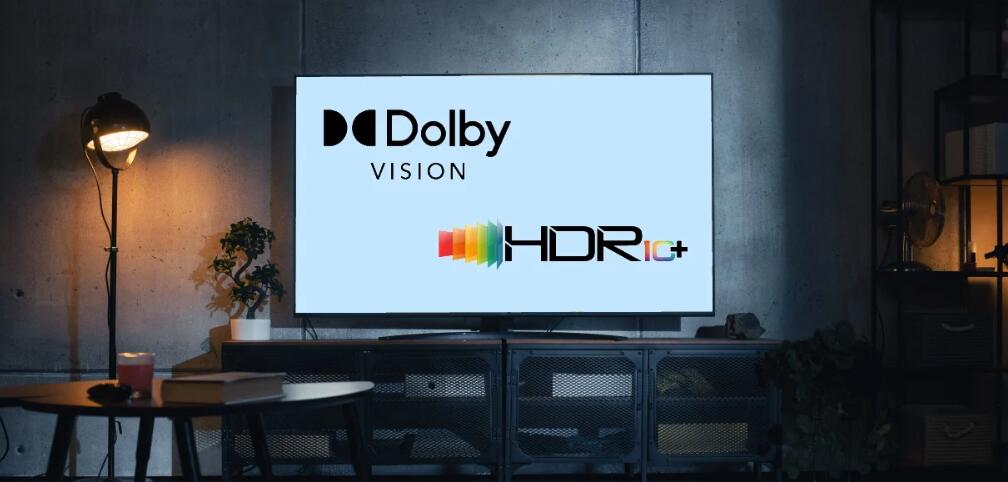
High Dynamic Range (HDR) is a technique used in photography and video production to capture and display a wider range of brightness and color than standard images or video. HDR has become increasingly popular in recent years, with many smartphones, cameras, and televisions now offering HDR capabilities. In this article, we will explore what HDR is, how it works, and why it is important.
Contents
Dynamic Range
Dynamic range refers to the difference between the darkest and brightest parts of an image or scene. In photography, dynamic range is measured in stops, with each stop representing a doubling or halving of the amount of light. A typical camera can capture around 8-12 stops of dynamic range, while the human eye can see a dynamic range of around 20 stops.
The problem with capturing dynamic range in photography or video is that the camera’s sensor or film can only capture a limited range of brightness and color. This means that if you take a photo or video of a scene with a high dynamic range, parts of the image may be overexposed or underexposed, resulting in lost detail and a flat, uninteresting image.
How HDR Works
HDR works by capturing multiple images at different exposures and combining them into a single image with a wider dynamic range. This is usually done by taking three or more images at different exposures, often referred to as bracketing. The images are then combined using software to create a final image with a wider dynamic range than any of the individual images.
There are two main types of HDR: HDR photography and HDR video.
HDR Photography
In HDR photography, multiple images are taken at different exposures and combined to create a final image with a wider dynamic range. This can be done manually by taking several photos with different exposure settings and then combining them in post-processing software, or it can be done automatically by a camera that has HDR capabilities.
The camera takes multiple images at different exposures, usually using auto-bracketing. The images are then combined using software to create a final HDR image. The resulting image has more detail in the shadows and highlights, and a more natural and vibrant color palette.
HDR Video
HDR video works in a similar way to HDR photography, but instead of taking multiple images at different exposures, the camera records multiple video frames at different exposures. The frames are then combined using software to create a final video with a wider dynamic range.
HDR video requires specialized equipment, including cameras and displays that support HDR. The most common types of HDR video are HDR10, Dolby Vision, and HLG (Hybrid Log-Gamma). HDR video can provide a more immersive viewing experience, with more detail in the shadows and highlights, and a more realistic and vibrant color palette.
HDR Standards
There are several HDR standards used in photography and video production, including HDR10, Dolby Vision, and HLG.
HDR10
HDR10 is an open standard for HDR content that was developed by the Consumer Technology Association (CTA) and is supported by most HDR displays. HDR 10 supports a maximum brightness of 1,000 nits and a color depth of 10 bits, which means it can display over one billion colors.
Dolby Vision
Dolby Vision is a proprietary HDR standard developed by Dolby Laboratories. It supports a maximum brightness of 10,000 nits and a color depth of 12 bits, which means it can display over 68 billion colors. Dolby Vision also includes dynamic metadata, which allows the TV to adjust the brightness and color settings on a frame-by-frame basis for a more accurate and immersive viewing experience.
HLG
HLG (Hybrid Log-Gamma) is a royalty-free HDR standard developed by the BBC and NHK. It is designed for broadcast television and supports a maximum brightness of 1,000 nits and a color depth of 10 bits. HLG is unique in that it can be used for both HDR and SDR (Standard Dynamic Range) content, which means that broadcasters can transmit both types of content using the same signal.
Benefits of HDR
HDR has several benefits over standard dynamic range images and video. These include:
More Detail
HDR images and video can capture more detail in the shadows and highlights, resulting in a more natural and realistic image.
More Vibrant Colors
HDR images and video can display a wider range of colors, resulting in a more vibrant and realistic image.
Improved Contrast
HDR images and video can display a higher contrast between dark and light areas, resulting in a more visually stunning image.
Better Viewing Experience
HDR images and video can provide a more immersive viewing experience, with more detail and a more vibrant and natural color palette.
Challenges of HDR
While HDR offers many benefits, there are also several challenges associated with the technology.
Display Capabilities
In order to view HDR content, you need a display that supports HDR. While HDR displays are becoming more common, they can still be expensive and may not be available in all sizes and configurations.
Content Availability
While more and more content is being produced in HDR, there is still a relatively limited amount of HDR content available, especially in comparison to standard dynamic range content.
Compatibility
Not all HDR standards are compatible with all HDR displays and devices, which can make it difficult to ensure that your content is viewable on all devices.
Conclusion
HDR is a technology that has become increasingly popular in recent years, offering benefits such as more detail, more vibrant colors, and a better viewing experience. While there are challenges associated with HDR, such as display capabilities and content availability, the technology is likely to become more prevalent as more content is produced in HDR and more devices support the technology.
- https://www.projectorleader.com/hachi-infinite-m1-review/
- https://www.projectorleader.com/elite-screens-aeon-series-review/
- https://www.projectorleader.com/pvc-material/
- https://www.projectorleader.com/how-to-install-a-projector-screen/
- https://www.projectorleader.com/elite-screens-yard-master-2-review/